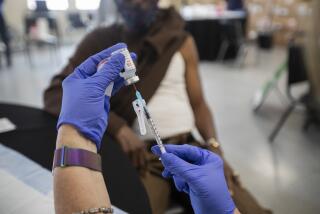Many Lack Gynecological Care
- Share via
More than half of American women avoid going to the gynecologist, a national survey has found, largely because they lack insurance, consider it too expensive or have language or cultural differences with their physician.
The poll, released last week by the American Social Health Assn., a consumer health education group in Durham, N.C., has alarming implications because lack of gynecological care is associated with an increased risk of cervical cancer and infertility.
“The numbers are surprisingly high,” says Dr. Alan DeCherney, chairman of the department of obstetrics and gynecology at UCLA Medical School. “But not getting care now can lead to major problems later on in life.”
In a telephone poll of 1,948 African American, Latino and white women across the country, one out of four admitted they hadn’t received a routine gynecological exam in the last year, and an additional 28% said they don’t get annual examinations. The biggest barrier was cost and lack of insurance (24%). Other obstacles women cited included language and cultural differences (20%), discomfort with their physicians (20%), fear of diagnosis (14%) and embarrassment (10%).
In Los Angeles, the survey focused on African American and Latino women. The percentages of women in Los Angeles avoiding care--54%--were similar to those polled nationally, and the reasons were also similar: cost, language and cultural differences, discomfort, fear and embarrassment.
“Cultural fears and taboos play a role too,” says Dr. Luis N. Pacheco, medical director of the California Hospital Medical Center in Los Angeles. “In the Hispanic community, some women believe that they’ll lose their virginity if they get a gynecological exam. And certain Middle Eastern cultures frown upon male physicians performing gynecological exams.”
But if left untreated, gynecological problems can cause serious complications years later. Sexually transmitted diseases, such as chlamydia and gonorrhea, for example, often cause no symptoms but can be easily detected by routine tests. Up to 40% of women with untreated chlamydia or gonorrhea develop pelvic inflammatory disease, or PID, a serious infection that can scar the Fallopian tubes and result in infertility, or a life-threatening tubal (or ectopic) pregnancy.
Similarly, HIV doesn’t have obvious symptoms initially, and a seemingly innocuous infection such as vaginitis can be an early sign of diabetes.
Yet the right treatments can slow the progression of HIV infection to AIDS and can control diabetes. And early detection of cervical cancer, which is diagnosed by a simple Pap smear, can result in an almost 100% cure rate.
“Education is key,” says DeCherney. “An ounce of prevention is worth a pound of cure.”






